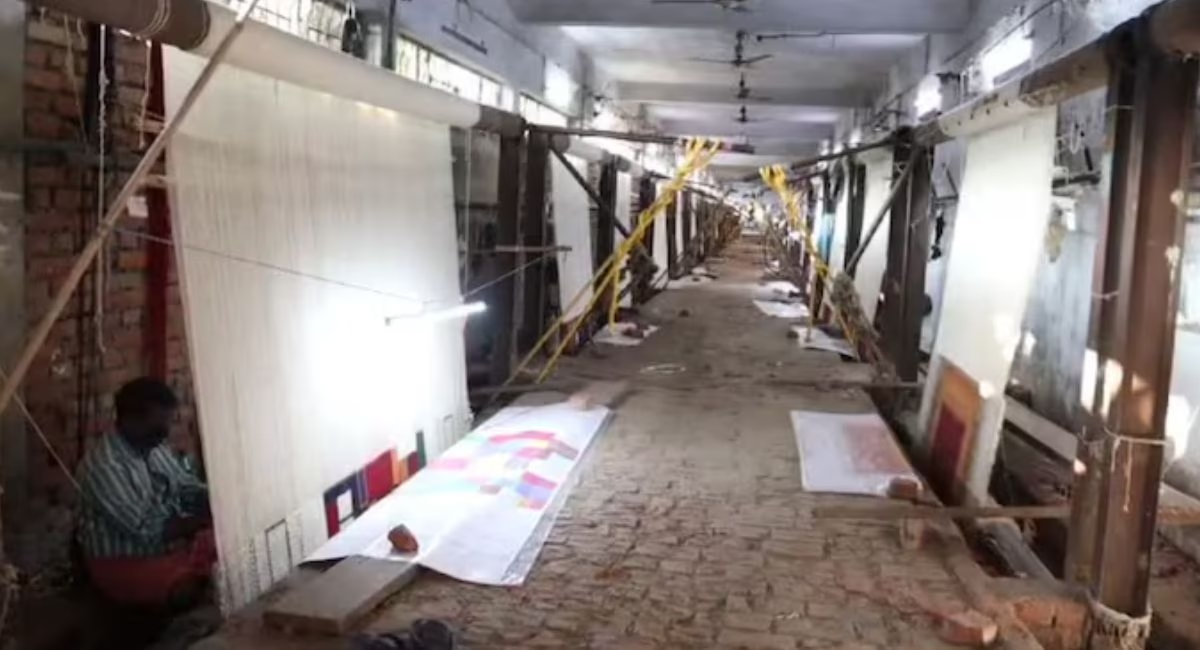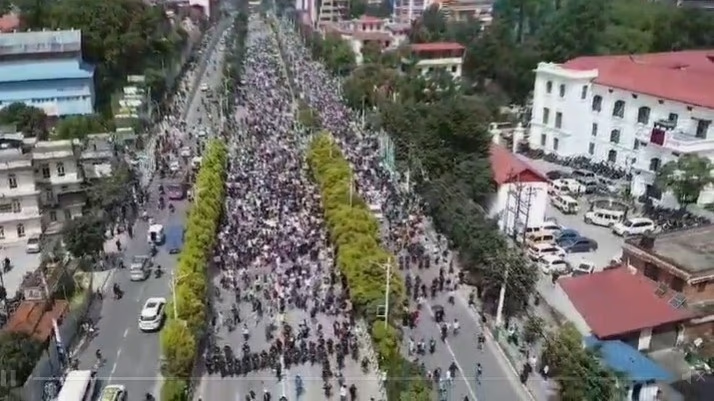Some characters are so powerful that they make us perceive reality through the lens of fiction. One such role is that of Kaleen Bhaiya from the OTT series Mirzapur. Pankaj Tripathi’s strong performance has crafted such an image for this Uttar Pradesh city and its carpet business that the true picture seems blurred. However, the stories, as thrilling as they may be, always pale in comparison to reality.
The series highlights that business is enormous for both Mirzapur and Kaleen Bhaiya. But the real Mirzapur and the series diverge, showing that in the old days of Mirzapur, the trade of guns and drugs was absent, but carpet trading was the city’s hallmark. In fact, the Mirzapur-Bhadohi belt in Uttar Pradesh was once a part of Asia’s largest carpet-producing area. Most intricately woven products were exported to America and Europe.
Rajendra Srivastava, a former journalist from Mirzapur, told Aaj Tak that Bhadohi and Mirzapur have long been centers of carpet weaving. Nearly every household in both cities had setups for carpet weaving. Remembering his experiences from 50 years ago, he noted that these small carpet-weaving units provided employment to a large number of people. But slowly, the scene changed.
He explained that what was once a robust carpet industry in Uttar Pradesh now appears to be deteriorating. Various factors, including machine-made carpets, a ban on child labor, the global economic slowdown, and the migration of artisans, have dealt a significant blow to the industry. Nonetheless, a few 'carpet brothers' in Mirzapur continue to struggle to keep the age-old tradition, deeply woven into the fabric of society, alive.

Source: aajtak
According to local legends, the roots of the carpet industry in Mirzapur and Bhadohi date back to the reign of Mughal Emperor Akbar in the 16th century. Many believe a group of Persian carpet weavers, on their way to the Mughal court, were attacked by bandits. After being rescued and provided shelter by local villagers, they made this region their home. At that time, Iran was a significant hub of handmade carpets, with carpet weaving dating back to nearly 500 BCE.
It's said that the Persian artisans taught the locals the intricacies of weaving, leading to the birth of the Mirzapur-Bhadohi carpet industry, which eventually spread to several nearby districts of Uttar Pradesh, including Varanasi, Ghazipur, Sonbhadra, Kaushambi, Allahabad, Jaunpur, and Chandauli.
Kundan Arya, a carpet manufacturer based in Bhadohi, disputes this narrative. Arya told Aaj Tak that the industry gained strength when a British woman brought weavers from Persia in 1899 and opened the first formal factory, E Hill & Company, in Mirzapur's Khamaria. Arya says that Persian weavers taught the craft to locals who were already engaged in metal engraving.

Source: aajtak
The carpet business saw significant growth in the early 19th century, especially after the 1857 revolt when many weavers from Agra and Delhi moved to the peaceful Mirzapur. This solidified the carpet trade, making it Asia's largest carpet-producing region. Experts say all the ingredients for Mirzapur to become a major carpet industry center were present — affordable and skilled labor and a location between Delhi, Kolkata, and Allahabad. By the early 20th century, the Mirzapur-Bhadohi carpet industry had reached its golden age.
Read more:
Vikram Chandra Jain from Mirzapur explained that the knowledge and skills of carpet making have been passed down from generation to generation. He mentioned that even during these disappointing times, Bhadohi and Gopiganj (a municipal board in Bhadohi district) and surrounding areas still have over 400 manufacturing units.
The decline of Mirzapur’s carpet industry wasn't sudden; it happened gradually. Various reasons contributed to the erosion of dominance in this area. Village Weavers’ Director Vikram Chandra Jain said, “Forty years ago, Mirzapur had at least 25,000 households with looms. But the reports on child labor severely impacted the trade.”
Vikram pointed out that the demand for hand-woven carpets in India has dwindled. Now, carpet brothers must rely on foreign customers. Additionally, government neglect has also hurt the industry. Vikram Chandra Jain stated that pre-COVID, Mirzapur had about 10,000 weavers; now, only around 800 remain. Several skilled artisans have left the business, believing there’s no profit in it. They’ve sought employment through MGNREGA and other opportunities.




